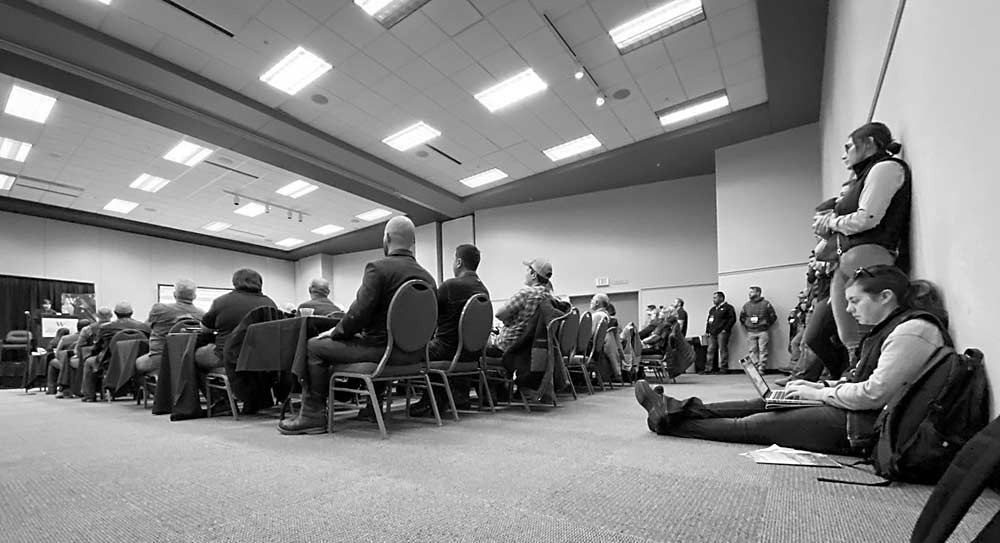
It was standing-room-only at 7:30 a.m. for a session on vineyard renovations on the second morning of the Washington Winegrowers Association’s annual meeting. Many of the state’s vineyards are aging, raising questions about how to evaluate ongoing vineyard health and how best to plan to replant.
“When profits are down, lowering your costs by removing vineyards can be wise when there’s areas in your vineyard with long-term quality problems,” said Joe Cotta, manager of Ste. Michelle’s Cold Creek Vineyard.
He shared his thought-process on deciding whether a vineyard needs renovation — such as if you are losing the roguing battle against the spread of grapevine leafroll virus — or just needs reclamation strategies to boost production of existing vines.
Replanting is part of the natural cycle of vineyards, said Brad Sorensen, vineyard manager for Les Collines Vineyard in Walla Walla. You can use what you learned from farming the previous vineyard, such as the microclimate and frost risk, to decide what to plant next so that it will be the right fit, he said, as well as considering what you can get a long-term contract for.
But replanting is different from planting for the first time, in a few important ways, said Michelle Moyer, extension viticulture professor at Washington State University. New vines have to contend with all the stresses that have accumulated over farming that site for years or decades, such as soil pests, disease pressure and nutrient limits.
“Young vines can’t handle a lot of stress,” she said. “They have a very small stress bucket and a lot of stress coming at them.”
Pulling a block infected with leafroll virus and replanting it — when it’s surrounded by other infected blocks — is setting up the replant for failure, Moyer said.
As for soil pests such as root knot nematodes or phylloxera, rootstocks will be an important tool for replanting, she said. Growers didn’t need those tools when planting vineyards for the first time in Washington, but now for replants facing increased pest pressure they become important risk-management tools.
Moyer spoke again about rootstocks as a phylloxera management option in an afternoon session about new pests.
“We’ve solved the phylloxera problem; we solved it over 100 years ago,” she said, wearing a pro-rootstocks T-shirt. “Rootstocks are the answer, and if you are in an infested area, you might need to use them.”
At that session, WSU enology professor Jim Harbertson shared findings — on the wine front — from a rootstock trial planted in Prosser in 1999. He made more than 90 wine replicates from the trial and found nothing. Really.
“What we saw was that rootstocks didn’t really do anything,” he said. “There really isn’t going to be any change in terms of wine composition.”
Other topics on the annual meeting agenda for day 2 included new tools for precision irrigation, the potential for making and marketing “natural,” biodynamic and organic wines, and how to win with canned wines.
—by Kate Prengaman
Related:
—How to claw back market share
—Winegrowers honors industry leaders






Leave A Comment